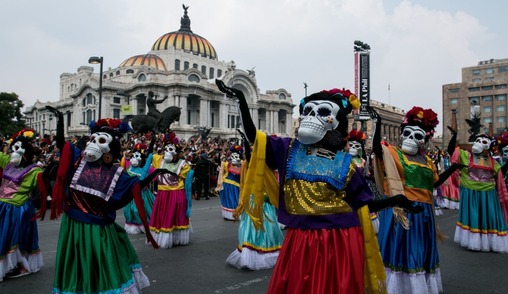
Forget what you think you know about death. In Mexico, it’s not something to fear — it’s something to celebrate. Every year from October 31st to November 2nd, the country bursts into color, scent, sound, and memory for what might be the most magical holiday on the planet: Día de los Muertos, or The Day of the Dead.
It’s a time when cemeteries come alive. When skeletons smile. When families build glowing altars filled with flowers, food, and photos. It’s not spooky — it’s spiritual. It’s not mourning — it’s memory with music. And once you experience it, you’ll never see death the same way again.
Not Halloween – This Is Something Deeper
Let’s clear this up: The Day of the Dead isn’t Mexican Halloween. While it happens around the same time, its roots go back far beyond anything involving costumes or candy. This tradition is a blend of pre-Hispanic rituals and Catholic influences, creating a celebration that honors loved ones who have passed on — not with sorrow, but with joy.
In ancient Mesoamerican beliefs, death wasn’t the end — it was a part of the cycle. So, rather than fearing spirits, people welcomed them back once a year with food, drink, and the things they loved in life. Over centuries, that became Día de los Muertos, complete with candles, marigolds, sugar skulls, and soul-stirring traditions.
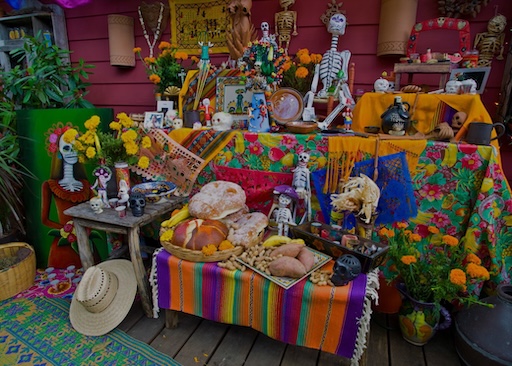
The Altar (Ofrenda): A Bridge Between Worlds
At the heart of it all is the ofrenda — a lovingly decorated altar built in homes, schools, offices, and even public plazas. Each one is unique, but most include:
- Photos of the deceased
- Marigold flowers (cempasúchil)
- Candles and incense
- Favorite foods and drinks of the departed
- Pan de muerto – a special sweet bread
- Colorful papel picado (cut paper banners)
The belief is that on these special days, the souls return to visit. The altar becomes a gateway between this world and the next — a warm welcome to those we miss most.
Marigolds, Music, and Midnight Cemeteries
If you walk through a Mexican cemetery during this time, don’t be surprised to hear laughter, guitars, or even fireworks. Families gather around graves, lighting candles, eating tamales, and telling stories about grandma’s hilarious cooking disaster or tío José’s obsession with rancheras. It’s part party, part prayer — a spiritual family reunion with music and mezcal.
In Oaxaca and Pátzcuaro, the celebrations are especially vibrant. Locals dress as elegant skeletons — La Catrina style — parading through streets lit by flickering candles and petals. It’s theatrical, it’s artistic, it’s alive with meaning.

Why Skulls Smile
One of the most iconic symbols of Día de los Muertos is the skull — not creepy, but playful. You’ll see sugar skulls decorated with bright icing, glitter, and sometimes names. Kids eat them, artists paint them, and altars proudly display them. They’re not meant to scare, but to remind us that death is part of life — and it doesn’t have to be grim.
Mexicans don’t laugh at death. They laugh with it. And maybe, in doing so, they’ve found a secret the rest of us are still trying to understand.
Behind the Paint: La Catrina’s Story
Ever seen those skeletal ladies in fancy hats? That’s La Catrina, a satirical figure created by Mexican artist José Guadalupe Posada and later popularized by Diego Rivera. She’s become the unofficial queen of the holiday — a reminder that no matter how rich, stylish, or important we are, we all end up the same way. Dusty. But fabulous!
The Real Magic: Remembering Together
Ask anyone who celebrates Día de los Muertos, and they’ll tell you — it’s not about skulls or flowers. It’s about remembrance. About keeping the dead alive in memory and spirit. About telling stories that spark laughter and tears. It’s an act of resistance against forgetting — and in a world that moves too fast, that’s sacred.
Want to Experience It?
If you’re ever in Mexico in late October or early November, do yourself a favor and find a community celebrating Día de los Muertos. Visit Oaxaca, Mexico City’s Mixquic neighborhood, or the lakeside island of Janitzio in Michoacán. Be respectful. Be open. And don’t be surprised if something inside you shifts forever.
Final Thoughts
In Mexico, the dead don’t rest in silence. They sing, they dance, they share bread and stories. Día de los Muertos is a beautiful contradiction — solemn and silly, sacred and loud. It’s a celebration of life through the lens of death. And it might just be one of the most human things you’ll ever witness.
Share this story and inspire others.
Tags: Day of the Dead, Dia de los Muertos, Mexico traditions, altars, sugar skulls, Mexican culture, celebration of life
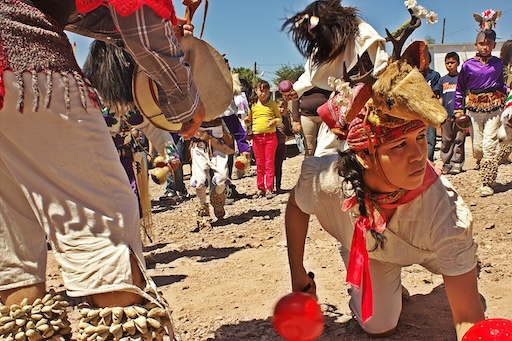 La Danza del Venado – The Sacred Deer Dance of the Yaqui People
La Danza del Venado – The Sacred Deer Dance of the Yaqui People
 Tarahumara Rarámuri – The Ultramarathon Runners of the Sierra
Tarahumara Rarámuri – The Ultramarathon Runners of the Sierra
 La Santa Muerte – The Controversial Saint of Death
La Santa Muerte – The Controversial Saint of Death
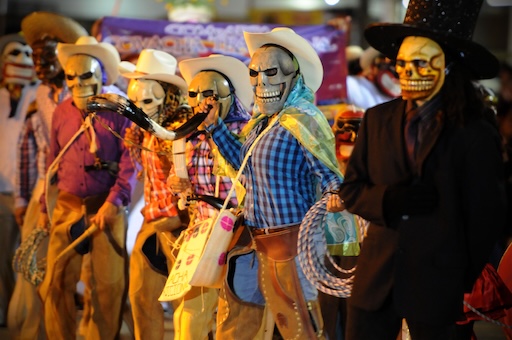 Xantolo – The Huasteca’s Version of Day of the Dead with Masks and Dances
Xantolo – The Huasteca’s Version of Day of the Dead with Masks and Dances
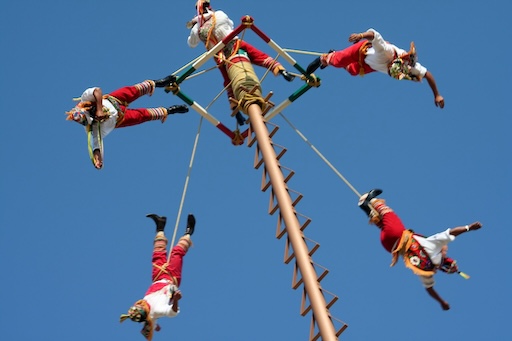 Voladores de Papantla – Men Who Fly from Poles
Voladores de Papantla – Men Who Fly from Poles
 Cenote Sagrado – Sacred Sinkhole of the Maya
Cenote Sagrado – Sacred Sinkhole of the Maya
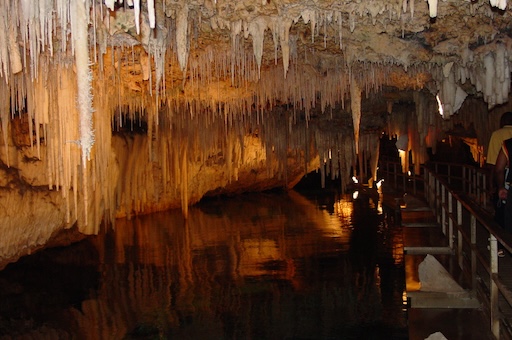 Cueva de los Cristales – Mexico’s Giant Crystal Cave
Cueva de los Cristales – Mexico’s Giant Crystal Cave